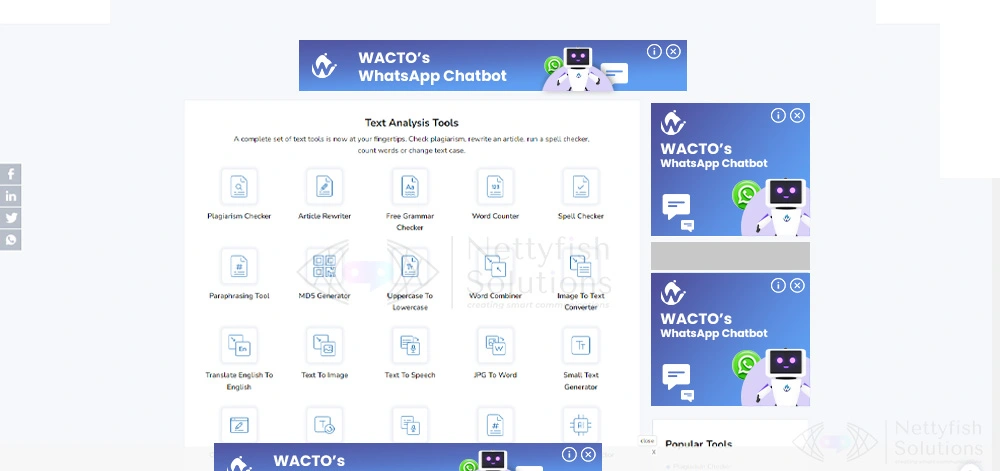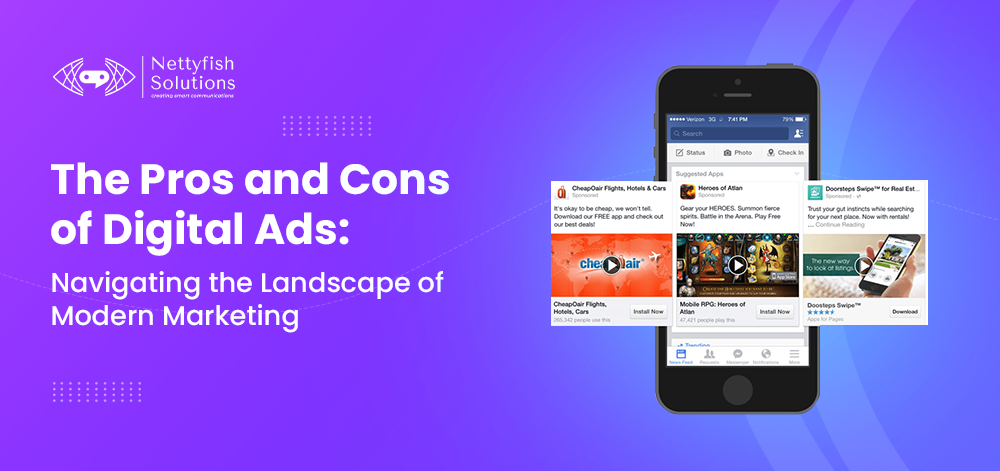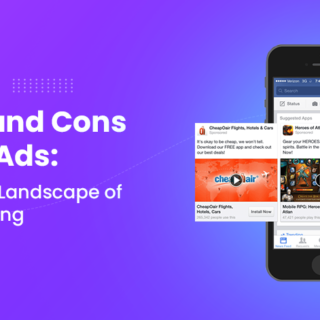In this blog, we explore the pros and cons of digital ads, shedding light on their impact in the dynamic landscape of advertising.
In the ever-evolving realm of marketing, digital advertising has emerged as a powerhouse, reshaping the way businesses connect with their target audiences. Digital ads, a keystone of digital marketing strategies that come with a set of its own advantages and challenges.
Pros of Digital Ads:
1. Targeted Reach: Digital advertising allows businesses to precisely target their potential audience across the internet. Through demographic targeting, behavior analysis, and other parameters, marketers can tailor their ad campaigns to reach the most relevant and receptive audience.
2. Cost-Effectiveness:
Compared to traditional advertising channels, digital ads often offer a more cost-effective solution. With flexible budgeting options, businesses can optimize their spending and maximize the impact of their campaigns.
3. Real-Time Analytics:
Digital ads provide instant access to analytics and performance metrics. Marketers can track impressions, clicks, conversions, and other key metrics in real time, allowing for swift adjustments and optimizations to enhance campaign effectiveness.
4. Global Reach:
Digital ads break down geographical barriers, enabling businesses to reach a global audience. Whether you’re a local startup or an international brand, digital advertising offers a platform to expand your reach beyond traditional boundaries.
5. Interactivity:
Unlike static print ads, digital ads often incorporate interactive elements. Engagement factors such as clickable links, polls, surveys, or social media integrations, enhances the overall user experience and increases the likelihood of conversions.

Cons of Digital Ads:
1. Ad Blockers:
One of the significant challenges in the digital advertising landscape is the prevalence of ad blockers. As users seek to enhance their online experience by blocking ads, businesses face the risk of reduced visibility and engagement.
2. Saturation and Ad Fatigue:
The digital space is crowded with ads competing for attention. This type of saturation can lead to ad fatigue, where users become numb to marketing messages, impacting the effectiveness of campaigns.
3. Technical Challenges:
Digital ads are subject to technical issues such as slow loading times, compatibility issues across devices, or glitches. These challenges can affect the overall user experience and drive negative perception to the brand.
4. Privacy Concerns:
As digital advertising relies on data-driven targeting, privacy concerns come into play. Stricter regulations and growing awareness about data privacy may limit the extent to which businesses can utilize personalized targeting strategies.
5.Dependency on Internet Connectivity:
For digital ads to reach their audience, a stable internet connection is essential. In regions with unreliable or limited internet access, the effectiveness of digital advertising may be compromised.
Navigating the Landscape: Tips for Successful Digital Advertising
While acknowledging the pros and cons, businesses can navigate the digital advertising landscape successfully with strategic approaches:
1. Diversify Ad Formats:
Explore a variety of ad formats, including display ads, video ads, and social media ads. Diversification helps in capturing audience attention through different mediums.
2. Adopt a Multi-Channel Approach:
Integrate digital advertising into a comprehensive multi-channel marketing strategy. Combining digital ads with other channels like email marketing and content marketing creates a holistic brand presence.

3. Prioritize User Experience:
Ensure that digital ads prioritize a positive user experience. Optimize loading times, create compelling content, and consider user feedback to enhance the overall ad experience.
4. Stay Informed on Trends:
The digital advertising landscape is dynamic, with trends evolving rapidly. Stay informed about emerging technologies, consumer behavior shifts, and industry best practices to stay ahead of the curve.
5. Address Privacy Concerns:
Be transparent about data usage and address privacy concerns in your digital advertising strategy. Comply with relevant regulations and communicate your commitment to user privacy.
In conclusion, digital ads offer a powerful tool for businesses to connect with their target audience in the digital age. By understanding and mitigating the challenges, businesses can leverage the strengths of digital advertising to enhance brand visibility, drive engagement, and achieve their marketing objectives. As technology continues to advance, staying adaptable and informed is key to navigating the dynamic landscape of digital advertising.







